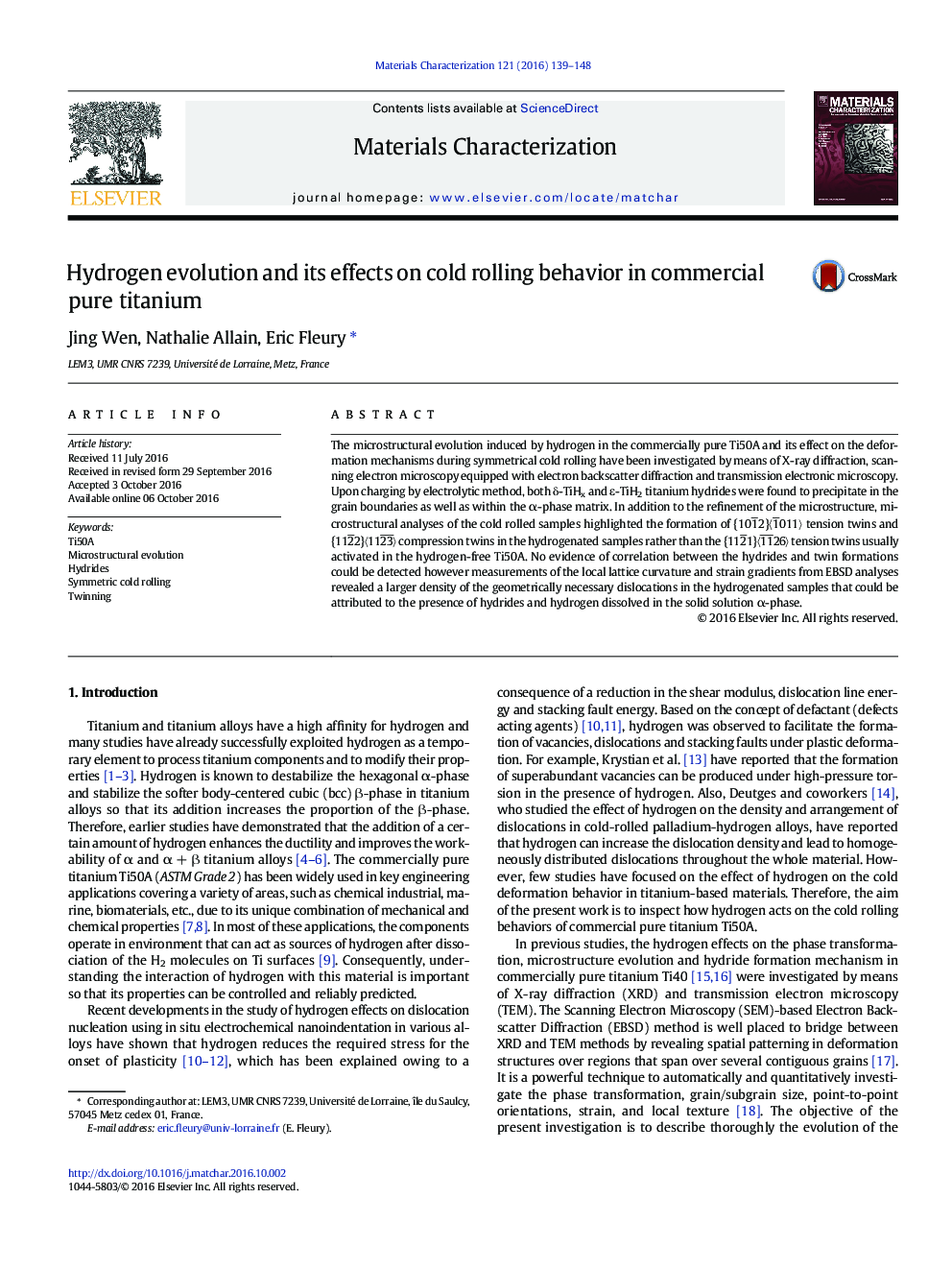| Article ID | Journal | Published Year | Pages | File Type |
|---|---|---|---|---|
| 5455015 | Materials Characterization | 2016 | 10 Pages |
Abstract
The microstructural evolution induced by hydrogen in the commercially pure Ti50A and its effect on the deformation mechanisms during symmetrical cold rolling have been investigated by means of X-ray diffraction, scanning electron microscopy equipped with electron backscatter diffraction and transmission electronic microscopy. Upon charging by electrolytic method, both δ-TiHx and ε-TiH2 titanium hydrides were found to precipitate in the grain boundaries as well as within the α-phase matrix. In addition to the refinement of the microstructure, microstructural analyses of the cold rolled samples highlighted the formation of {101Ì
2}â¨1Ì
011â© tension twins and {112Ì
2}â¨112Ì
3Ì
â© compression twins in the hydrogenated samples rather than the {112Ì
1}â¨1Ì
1Ì
26⩠tension twins usually activated in the hydrogen-free Ti50A. No evidence of correlation between the hydrides and twin formations could be detected however measurements of the local lattice curvature and strain gradients from EBSD analyses revealed a larger density of the geometrically necessary dislocations in the hydrogenated samples that could be attributed to the presence of hydrides and hydrogen dissolved in the solid solution α-phase.
Related Topics
Physical Sciences and Engineering
Materials Science
Materials Science (General)
Authors
Jing Wen, Nathalie Allain, Eric Fleury,
